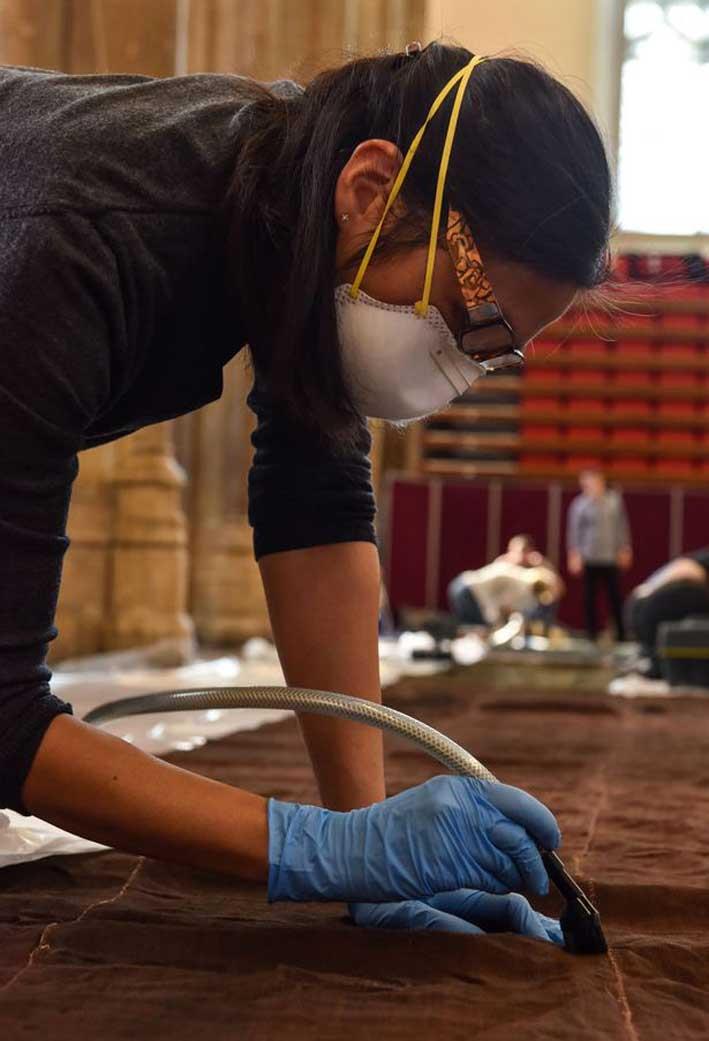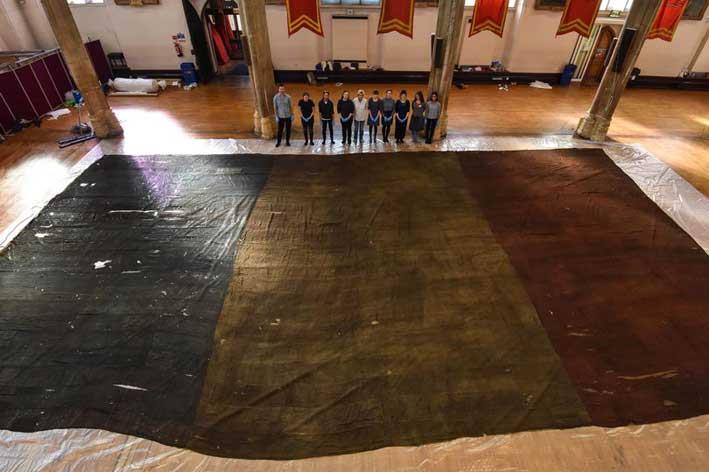An enormous French flag measuring 16x8.3 metres, captured by Admiral Lord Nelson from the French Témèraire-class 72-gun ship of the line Le Genereux during the Battle of the Malta Convoy in 1800, is to go on display in the UK for the first time in 100 years.
The 217-year-old flag, believed to be one of the earliest Tricolours in existence, dates back to the French occupation of Malta and the time when national flags played a vital role in sea battles as warring ships could identify the enemy through cannon smoke and the fog of war.
Volunteers at the Norfolk Museums Service are currently carrying out painstaking conservation work before it is revealed to the public.
The Ensign Of Le Généreux from The Malta Independent on Vimeo.
Le Genereux was one of only two ships to have escaped the British attack at the Battle of the Nile in August 1798 – the battle that established Nelson’s reputation as a British national hero.
Lord Nelson eventually caught up with the ship two years later, in February 1800, during the Battle of the Malta Convoy. On the morning of 18 February, the English fleet gave chase to a French squadron attempting to resupply its garrison in Malta. Le Genereux provided them with cover and three escaped before Le Genereux surrendered off Malta and its flag taken by Nelson and his men.
At the time, the French garrison in Valletta had already been under siege for 18 months and was suffering severe food shortages. In a desperate effort to retain the garrison’s effectiveness, a convoy was arranged carrying food, armaments and reinforcements. But a naval blockade led by Lord Nelson ensured that none of the supplies reached Malta, which held out for another seven months against increasing odds before finally surrendering on 4 September 1800.

Le Genereux’s captured flag was later presented to the City of Norwich and was on display in St Andrew's Hall in the city in the late 1800s. It was last on display at Norwich Castle in 1905 for the anniversary of the Battle of Trafalgar, but due to its size and fragility it has been kept in storage ever since.
It will now form the centrepiece of an exhibition this summer on Nelson’s relationship with his home county of Norfolk. Conservationists had to find a space large enough to unroll the flag and carry out checks and cleaning, which was done at its previous home of St Andrew’s Hall.
Ruth Battersby-Tooke, curator of Costume and Textiles at Norwich Castle, said: “The Ensign is remarkable for its survival in such a complete state, given its age and inherent fragility. It is emblematic of Norfolk Museums Service’s Nelson collections, the oldest French Ensign in the UK and the one with the most stirring and thrilling history.

“When we conceived this exhibition, we were determined to find a way of putting the flag on display. This has not been without its challenges, not least finding a space large enough to unroll the flag to check its condition and begin the conservation process. It was incredibly moving to be able to unroll the Ensign in the space where it had been on display until 1897.”
The flag will be on display at Norwich Castle Museum and Art Gallery from 29 July to 1 October.
Norfolk Museums Service and the Costume and Textile Association are raising funds for the full conservation and permanent display of the ensign as part of a Nelson gallery, with the work expected to cost about £40,000.
Photos: Norfolk Museum Service